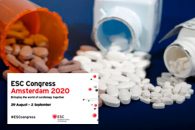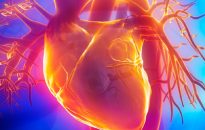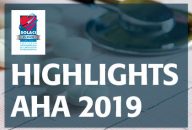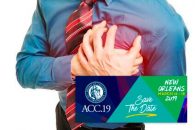Secondary prevention with P2Y12 inhibitors vs aspirin monotherapy in CAD patients Antiaggregation therapy plays a central role at long term to prevent new cardiovascular events in atherosclerosis patients. After repeat myocardial infarction (MI) or stroke, prognosis can vary considerably. Even though the current guidelines prefer aspirin as the first choice for secondary prevention over P2Y12…
ACC 2021 | ADAPTABLE: Low Doses of Aspirin Are Equally Effective and Present Lower Bleeding Risk
Patients diagnosed with cardiovascular disease taking aspirin as secondary prevention can take lower doses and achieve the same efficacy level as those taking 325 mg. According to the ADAPTABLE study, presented at the American College of Cardiology (ACC) 2021 Congress and simultaneously published in the New England Journal of Medicine (NEJM), both schemes were associated with…
ESC 2020 | More Evidence on Colchicine for Chronic Ischemic Heart Disease
According to this new study, colchicine offers some benefit to patients with chronic ischemic heart disease. Similar to COLCOT, this is the second large randomized study with results confirming the inflammatory hypothesis. Colchicine taken at a daily dose of 0.5 mg reduces cardiovascular events in patients with stable coronary disease, according to data from the LoDoCo2…
Chronic Coronary Syndromes Nowadays
Multiple drugs and treatment strategies have emerged in recent years to change significantly the prognosis of patients who suffer from stable chronic angina or, in terms of the latest guidelines, “chronic coronary syndromes.” This semantic change may seem of little importance, but it is intended to remind us that these are not stable patients, but…
Secondary Prevention: A Responsibility We Should Not Delegate
After coronary angioplasty, the use of drugs whose efficacy for the reduction of major events has been proven declines over time, which is associated with worse patient prognosis. Sometimes, without meaning to, we convey to patients the idea that, once the stent has been implanted, the artery is “cured” or that the only potential future…
AHA 2019 | COLCOT: Colchicine and the Return of the Anti-Inflammatory Theory
Low-dose colchicine seems to reduce the risk for new cardiovascular events in patients with a history of infarction. This drug is usually indicated for anti-inflammatory therapy in gout and pericarditis. Now, it could also reduce the rate of ischemic events as secondary prevention according to the COLCOT trial presented during the American Heart Association (AHA)…
ACC 2019 | Having an Infarction at Very Young Age or 10 Years Later Does Not Change Long-Term Mortality
Patients who suffered their first coronary event before turning 40 years old have similar long-term mortality to those who experienced it even 10 years later, according to the YOUNG-MI Registry presented at the American College of Cardiology [ACC] 2019 Scientific Sessions. Secondary prevention must be used aggressively in both young and elder patients. Over more than…
CANTOS: Anti-inflammatory Drug Canakinumab Seems to Reduce CV Events
This human monoclonal antibody that specifically targets inflammatory cells seems to reduce cardiovascular events when associated with optimal medical therapy, according to a new study presented at the European Society of Cardiology Congress and published simultaneously in the New England Journal of Medicine. The CANTOS trial enrolled 10,061 patients with a previous infarction and high C-reactive…







